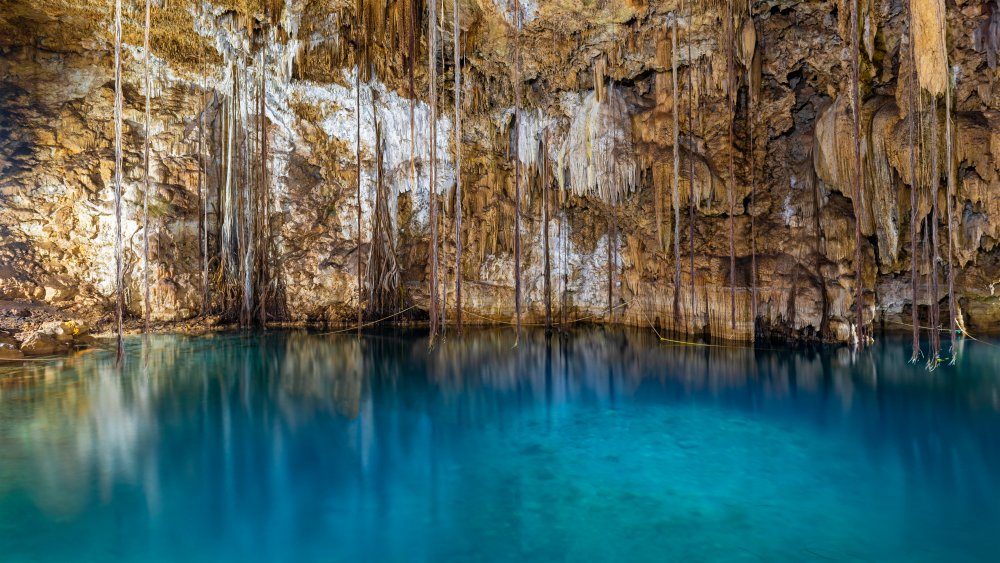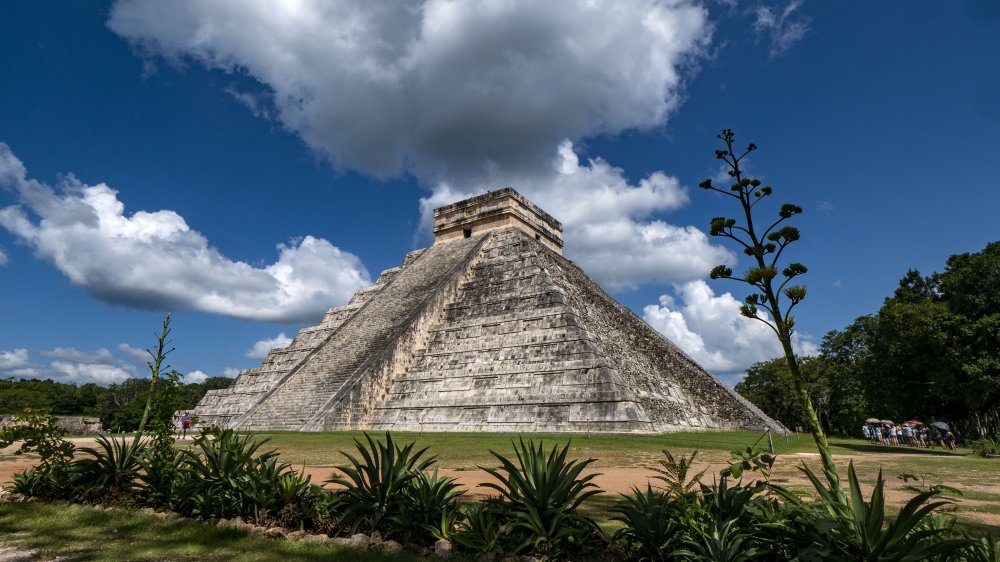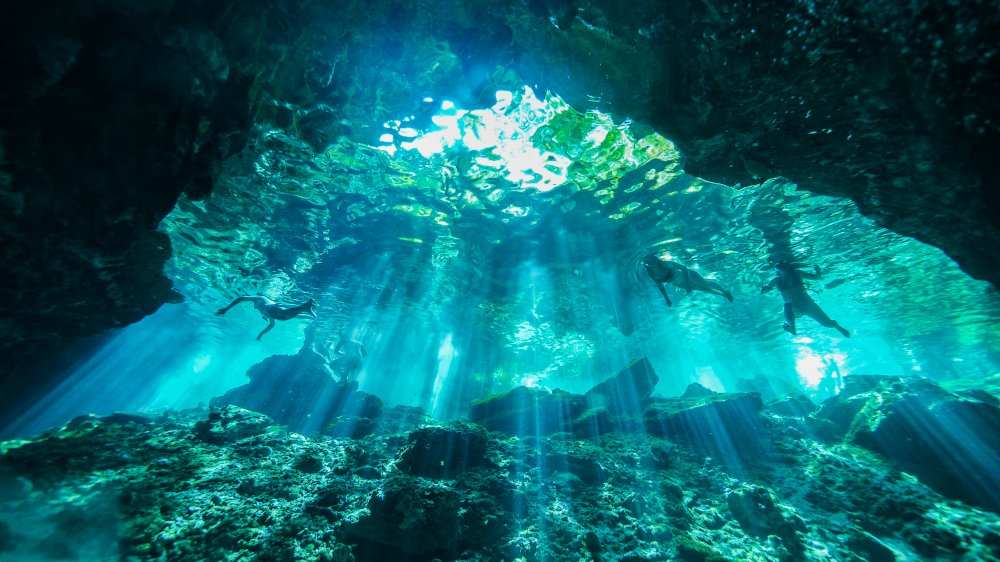Why The Mayans Believed Sinkholes Led To The Underworld
There are no rivers in Yucatán Peninsula, the traditional homeland of the Mayan civilization. The ancient Mayans relied on water-filled sinkholes called cenotes — which only exist in Mexico — for everything from drinking water to religious ceremonies. American archaeologist Ralph L. Roys, who translated the ancient Mayan Books of Chilam Balam for the Carnegie Institute of Science in 1933, called the texts "the most important part of ... native Maya literature." In them, we find "a wealth of historical and ethnological information invaluable to the student of the pre-Columbian career of the Maya."
According to The New York Times, "the afterlife for ancient Mayas was a terrifying obstacle course in which the dead had to traverse rivers of blood and chambers full of sharp knives, bats and jaguars." Mexican archaeologist Guillermo de Anda described the Mayan underworld Xibalba as "the place of fear, the place of cold, the place of danger, of the abyss." In his study of Xibalba, de Anda sought out-of-the way cenotes, many of which are drier than others that "seemed to have had a special religious significance." He found an underground road — paved and all! — that led around 100 meters (330 feet), stone rooms walled off from other sections of cave, and even a temple submerged in water. "There are a number of elements that make us think that this road is a representation of the journey to Xibalba," said de Anda.
The sacred Mayan sinkhole at Chichen Itza
In his appendix to his translation of the Chilam Balam, Roys told of the sanctity of a cenote near the ancient Mayan city of Chichén Itzá, which he described as "a center of pilgrimage to which people flocked from every part of the peninsula and from foreign countries also to make offerings of gold, incense, copper, precious stones and human victims." And it had its cenote to thank for this holy status. The Mayans believed that gods and the spirits of the distinguished dead inhabited the sacred sinkhole.
Roys quoted a Catholic bishop who mentioned the cenote several times in his writings on the native people of Yucatán. "Into this well it was their custom to cast living men as a sacrifice to the Gods in times of drought," he wrote, "and it was their belief that they did not die, although they never saw them any more." Pilgrims also threw in much of the offerings of gold and other precious stones they brought to the holy city.
One reason why the Mayans believed sinkholes led to the underworld may be the legend of Hunac Ceel, a chief of the city of Mayapán who conquered Chichén Itzá, a man who Roys described as "evidently of the stuff of which rulers are made." Hunac Ceel was said to have "cast himself into the cenote and returned from its depths" to come back bearing a prophecy from the gods.
Not all the sinkholes in Yucatan led to the Mayan underworld
A 2013 National Geographic expedition into a cenote near the ancient Mayan city from which Hunac Ceel hailed led researchers to an interesting discovery. They found that the wall surrounding ancient Mayapán conspicuously skirted one particular sinkhole located just to the south of the city, in the direction that represented the underworld to the ancient Mayans. Archaeologist Bradey Russell believed that this location and its exclusion from the rest of the city reveal that the cenote was a burial place for the dead as they awaited "the next cycle of creation."
But it also may have had a public health function. "Suppose these were plague victims," Russel said. "You wouldn't want them near the rest of the population. And you wouldn't want to drink the water either." The people of Mayapán used the legend of a feathered serpent with a head the size of a horse's to scare people away from the sinkhole (Nat Geo mistakenly claimed it was a horse's head, but a proper translation of the name Tzukán states that the horse part of the name is only meant as a size reference). The researchers found around 40 cenotes within the ancient walls of the city, suggesting that these were used for drinking, while the sinkhole deliberately set apart from residential life was most likely an entrance to the ancient Mayan underworld of Xibalba.


